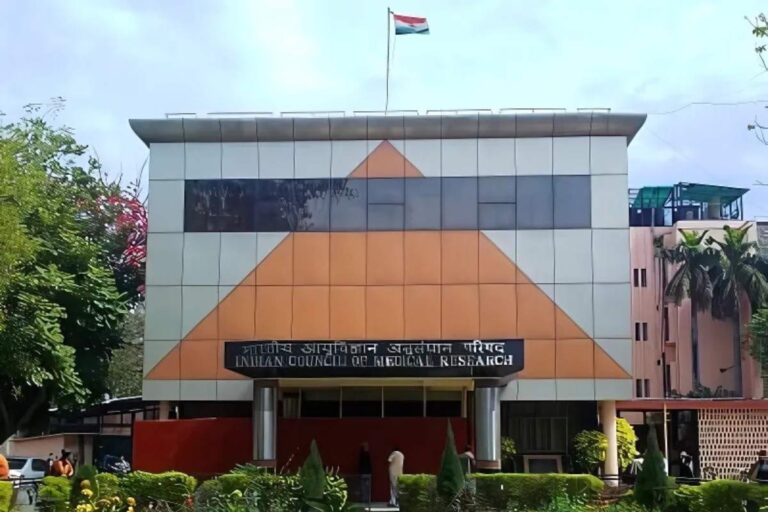Researchers find telltale signs that predict moments of mathematical insight, minutes before they happen
Mathematical epiphanies, those sudden, startling leaps from confusion to clarity, might not be as instantaneous as they feel. A new study suggests that experts telegraph their “aha!” moments through subtle shifts in behavior before the breakthrough arrives, and that these signals can be modeled and detected ahead of time.
The mathematicians themselves don’t realize it. But their bodies do. Or at least their behavior does, how they write, where they look, and when they pause or pivot on a problem. These changes, mapped over time, form a pattern that spikes in the moments leading up to a solution and then settles afterward. That’s the headline finding from research published in the Proceedings of the National Academy of Sciences, which analyzed videos of professional mathematicians as they worked through hard problems from a famously demanding competition.
Why this matters: the science of insight, quantified
- Researchers recorded six expert mathematicians as they attempted proofs from the William Lowell Putnam Mathematical Competition, an exam known for brutal difficulty and a median score that’s typically near zero or one out of 120.
- Before each breakthrough, the experts showed rising “behavioral unpredictability” in the two minutes leading up to the moment of insight, peaking roughly a minute afterward and then returning to baseline.
- The team developed a model, drawing on statistical physics and theoretical ecology, that forecasts the onset of insight by detecting changes in how these mathematicians shifted attention, combined ideas, and interacted with their working inscriptions (like blackboard writings and gestures).
That last point is key. Insights, which feel like they come out of nowhere, actually don’t. They are foreshadowed by recognizably different patterns in attention, movement, and expressive activity, subtle but measurable. And once you know what to look for, the transition becomes visible: a system drifting toward a tipping point.
The study at a glance

The investigators set up sessions where each expert confronted novel problems under observation, capturing both their verbal responses and their fine-grained interactions with blackboards and written artifacts. Every time a mathematician exclaimed something like “Oh, I see!”, a spontaneous confession of insight, the time-stamped event was logged. These moments often coincided with conspicuous physical shifts, sudden writing, emphatic gestures, or quick reorganizations of the blackboard, not unlike the legendary Archimedes’ cry of “eureka,” if somewhat less dramatic.
Believe it or not, those bursts weren’t random. The researchers’ model found consistent leading indicators. As the insight approached, the mathematicians’ paths of attention and association became increasingly unusual, connecting previously separate inscriptions, ideas, or problem components in rare, less predictable ways. That combinatorial mixing, long recognized as a hallmark of creative thinking in science and technology, appeared to intensify right before the breakthrough crystallized.
Borrowing from physics and ecology to model thinking
Here’s the kicker: the team framed these findings using “critical transitions,” a concept from the field of complex systems. In nature, and in the brain, systems sometimes shift abruptly from one stable state to another. Think ecosystems flipping regimes, motor control systems losing stability, or even climate systems tipping into new patterns. Those changes can be heralded by early-warning signals, like rising variance or autocorrelation, that hint the system is destabilizing and ready to transition.
The researchers applied similar logic to human problem-solving. They reasoned that insight might represent such a transition, from a confused mental state to a coherent solution state, and that the minutes before the shift might show early-warning characteristics in observable behavior. They were right. The model identified that mathematicians’ behaviors became more erratic, exploratory, and recombinatorial just before the moment of understanding, then calmed after the insight was gained and the proof path solidified.
Inside the testbed: Putnam problems and expert solvers
Why the Putnam? The annual William Lowell Putnam Mathematical Competition is a legendary exam for undergraduates in the United States and Canada. It’s six hours long, spans 12 questions, and is notorious for its difficulty, so much so that, most years, the median score rests at 0 or 1 out of 120. Which makes it a near-perfect laboratory for studying cognitive leaps: the problems are hard enough to demand real insight, not just routine technique.
Even for experts. In the recorded sessions, each mathematician began in a state of confusion, feeling their way through the space of the problem, before eventually hitting at least one genuine epiphany. Those breakthroughs typically arrived with verbal cues (“Oh I see!”) and sudden physical shifts, revealing a coupling between emotional relief and practical clarity. The activity on the board, writing, erasing, and reconfiguring, mapped onto that trajectory as well, helping the model detect when the solver was edging toward a conceptual pivot.
What “unpredictability” really looked like
The study’s main marker, behavioral unpredictability, was computed from the mathematicians’ moment-to-moment engagement with inscriptions and gestures. In plain terms: how often they shifted attention, what they connected, and whether those connections were standard or surprising. As a breakthrough approached, those connections became more unprecedented. The solver was trying new combinations, linking disparate elements, and recomposing the field of the problem into a shape where a pathway could emerge.
And the timing? The unpredictability rose during the two minutes before the insight, peaking about one minute after, then returning to a steady state. That after-peak likely captured the post-epiphany flurry, writing down the idea, locking in the proof structure, and closing the loop on the mental reorganization that had just occurred.
The anatomy of insight: associative bursts and tipping points
- Pattern detected: rising novelty in attention shifts and combinatorial linking of written elements before insight.
- Temporal profile: growth in unpredictability up to the moment, a peak shortly after, and a return to baseline as the solution stabilizes.
- Interpretation: insight behaves like a critical transition, sudden, but preceded by instability signals, mirroring dynamics seen in complex systems like ecosystems and motor control.
- Ground truth: insight events were identified by spontaneous verbal expressions and were often accompanied by marked bodily expression, gestures, exclamations, and rapid board work.
In short, the mind appears to wobble before it pivots. And that wobble can be measured.
What could be driving the behavioral shift?
The research team offered several possibilities. First, frustration. When steady progress stalls, solvers may loosen their grip on conventional approaches, becoming more open to alternative routes or allowing suppressed associations to surface. Second, deliberate exploration. Experts might intentionally break from standard pathways, testing odd connections or reframing the problem space. And third, biology. At the neural level, the destabilization of brain activity in regions involved in mathematical reasoning could be reflected in these behavioral signatures, a possibility the authors suggest is ripe for follow-up work.
None of this is mere speculation for its own sake; it points to hypotheses that can be tested. Future studies could introduce brain imaging or electrophysiological data synchronized with behavior to map the timing and causality more precisely. If certain cortical networks show increased variability before insight, mirroring the increased unpredictability in gestures and writing, that would tie the cognitive, behavioral, and neural levels into a single story.
From blackboards to broader creativity
Although the study focused on mathematics, the researchers explicitly connected their model to broader forms of creativity. Associative and combinatorial thinking drive breakthroughs across science and technology, from biomedical research to engineering innovation. The idea that creative leaps are preceded by measurable shifts in exploration, and that those shifts can be tracked, could inform training, collaboration, and even tool design across fields where insight matters.
Imagine research labs using real-time dashboards to visualize attention patterns during problem-solving or software interfaces that gently encourage combinatorial exploration when signals suggest a solver is approaching a conceptual boundary. Admittedly, we’re not there yet. But the logic is compelling, and the empirical foothold is now stronger.
Methodological note: from videos to models
Let’s get a bit more concrete. The researchers recorded detailed sessions of six expert mathematicians, each working through Putnam-style problems while speaking and writing on a blackboard. The team then identified all moments when the solver expressed a sudden understanding out loud, those “aha!” instances, and aligned the behavioral data around those timestamps. With that time-locked dataset, they examined how the patterns changed in the minutes before and after each insight, focusing on how attention moved among different inscriptions and how those movements created or dissolved connections.
By borrowing techniques and theory from statistical physics and theoretical ecology, disciplines adept at modeling systems near critical thresholds, they formalized a predictive model that detects the shift toward insight through growing behavioral instability. That cross-disciplinary borrowing isn’t a gimmick. It reflects a long-standing recognition that cognition, like many natural systems, exhibits phase changes: not just gradual drift, but sudden reorganizations that reorganize the landscape of possibilities.
Limitations, and what comes next
A few caveats are worth noting. The sample included only six experts, so replication with larger and more varied groups will be important. The task domain, elite-level mathematics, is both a strength (clear tests of genuine insight) and a constraint (not representative of all problem-solving). Also, the markers are behavioral, not neural, so claims about brain-level mechanisms remain speculative until paired with direct measurements. The authors acknowledge this and suggest follow-up work that could test the neural hypothesis directly.
Even so, the pattern is robust enough to be intriguing, and the theoretical alignment with critical transitions gives the finding a backbone that extends beyond the dataset. The consistency of the temporal profile, the two-minute ramp, and the one-minute post-peak, offers a concrete template for designing future experiments that can probe causality and boundary conditions.
Practical implications: education, research, and human-computer interaction
No, we’re not about to get apps that ping when a eureka is near. But there are plausible short-term implications:
- Education and tutoring: Instructors could watch for signs of exploratory recombination, unusual attention shifts, novel connections on the page, as potential indicators that a student is primed for insight, adjusting guidance to avoid interruption at critical moments.
- Research workflows: Teams might structure working sessions to allow for more open combinatorial exploration, especially when progress has stalled, recognizing that this “unpredictable” phase often precedes breakthroughs.
- Tool design: Writing environments and problem-solving software could be tuned to record and gently visualize attention shifts, helping users become more aware of their exploratory patterns in the lead-up to insight, without being distracting or prescriptive.
These applications remain speculative, but they’re grounded in the same mechanism reported by the study, measurable behavioral signals that rise before an insight and crest after it.
Historical echoes: Archimedes to now
The authors draw an explicit connection to the legendary image of Archimedes, who supposedly ran through the streets shouting “eureka.” While modern mathematicians may keep their clothes on, the embodied flair, the gestures, the emphatic writing, the vocal bursts, is still there. Insights don’t just happen in the head; they ripple through the body. And that ripple, it turns out, can be tracked with enough fidelity to signal the shape of what’s to come.
In numerous scientific domains, this bodily expression has often been treated as anecdotal color rather than data. This study flips that script. By treating gestures, gaze, and inscription handling as meaningful, not incidental, the researchers open a door to understanding cognition as an embodied process, dynamic, distributed across person and environment, and observably reorganized in the minutes before new understanding arrives.
Key findings, distilled
- Insights in mathematics present as sudden shifts from confusion to clarity, but behavioral patterns reveal a predictive ramp before the moment.
- Unpredictability in behavior, attention shifts, novel combinations of written elements, expressive movements, increases during the two minutes before insight, peaks about one minute after, then normalizes.
- A model inspired by critical transitions in complex systems can detect and anticipate the onset of these insights, suggesting cognitive breakthroughs operate like regime shifts in other domains.
- The work is grounded in recordings of six expert mathematicians solving Putnam competition problems, with insight events identified by spontaneous verbal cues and accompanied by marked embodied activity.
- Possible drivers for the pre-insight unpredictability include frustration-induced openness, deliberate exploration, and underlying neural destabilization, avenues for future research that could unite behavior and brain dynamics.
What we still don’t know
Plenty. For instance, whether the same early-warning signals appear in novices or other fields like physics, music composition, or software engineering. Whether all insights share this temporal profile or whether different problem types have unique signatures. And how individual differences, experience, working memory capacity, or cognitive style, modulate the pathway to insight. The present study sets a clear target: measure behavior temporally, align it with reported insights, and look for instability. Now the challenge is to scale and generalize.
The bottom line
Insights might arrive like lightning, but the storm front builds first. This study shows that in mathematics, at least, the mind’s approach to a breakthrough has a behavioral fingerprint: shifting attention, unusual connections, expressive bursts, and a measurable rise in unpredictability just before the idea clicks into place. With a model drawn from physics and ecology, the researchers capture that fingerprint and use it to anticipate the moment of clarity, something the solver, in the thick of it, can’t quite see until it lands.
And once it does? Calm returns. The writing steadies. The path becomes obvious. The solution, which moments ago felt out of reach, now sits squarely on the board. Not magic, just a system crossing a threshold. As it turns out, Eureka has a traceable arc.
Suggested Keywords
mathematics aha moment, eureka insight prediction, Putnam Mathematical Competition, behavioral unpredictability insight, critical transitions cognition, statistical physics model insight, mathematical creativity study, embodied cognition mathematics, early warning signals breakthroughs






















